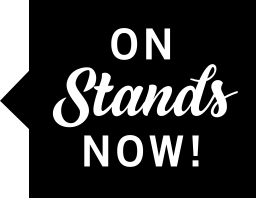The relationship between urban life and coastal life, between celebration and spiritual reverence—that’s something we know a bit about in south Louisiana, especially during Mardi Gras season.
There are similar ties for the people of Haiti, and they are showcased in the exhibit “The Carnival, the City and the Sea” going on now at the LSU Museum of Art.
Haitian artists reflect on their relationships to the bustling urban environments and daily life, their connections to the unpredictability of nature and the sea and the harmony between their beliefs in Voodoo deities and Catholicism during carnival celebrations.
In vibrant paintings on found materials, papier-mâché sculptures and detailed architectural cubes, the artists—some of them self-taught—give a colorful view of life and spirituality in Haiti. The exhibit takes on an island town vibe with brightly colored walls and old, shuttered windows and doors mounted in the spaces between works.
The museum’s new executive director Daniel Stetson, who has visited Haiti before, says he loves the sophisticated color palette and use of iconography (read more about Stetson below).
The exhibit continues this month until March 20. Several events, such as a poetry workshop Feb. 28 and a Haitian dance class March 6, offer great opportunities to browse the exhibit. lsumoa.org
NEW IN TOWN
Daniel Stetson joined the LSU Museum of Art as its executive director Jan. 1. He grew up in New York but spent many years working at museums across the South, most recently as the executive director of the Hunter Museum of American Art in Chattanooga, Tennessee.
On what drew him to the LSU Museum of Art:
“I really wanted to come back to a university setting. This museum has both: We are the art museum for the university and the art museum for the community.”
On the bigger footprint of the redesigned permanent collection space, opening March 4:
“For us, it’s a big moment. What we want to do here is create our identity for being that central hub for looking at Louisiana art and culture. What we will provide in the permanent collection, it definitely won’t be static. There will be rotations and new things inserted occasionally to enliven it over time.”
On his first visit to Baton Rouge:
“One of my first days here was in December when the Christmas parade was happening downtown. I watched the parade go by—they were throwing beads at a Christmas parade, which is not someone you’d typically see [elsewhere]. The street was full of people. Then, I saw BeauSoleil at the Manship Theatre that night. I was immersed for a day right there in what this town is all about. … With Baton Rouge, the people here are so very nice, and consistently so. I’m a people person, so that was part of what drew me here.”
On celebrating Southern art:
“There is a lot of creativity and activity in this region that I know I want to be part of, giving presence and identity and exposure to the great talents in this region. I want to use this opportunity at this museum to do that.”
Some of his favorite Louisiana artists from the past:
Painter and sculptor Ida Kohlmeyer—one of her paintings is part of the museum’s collection—and surrealist photographer Clarence John Laughlin.









